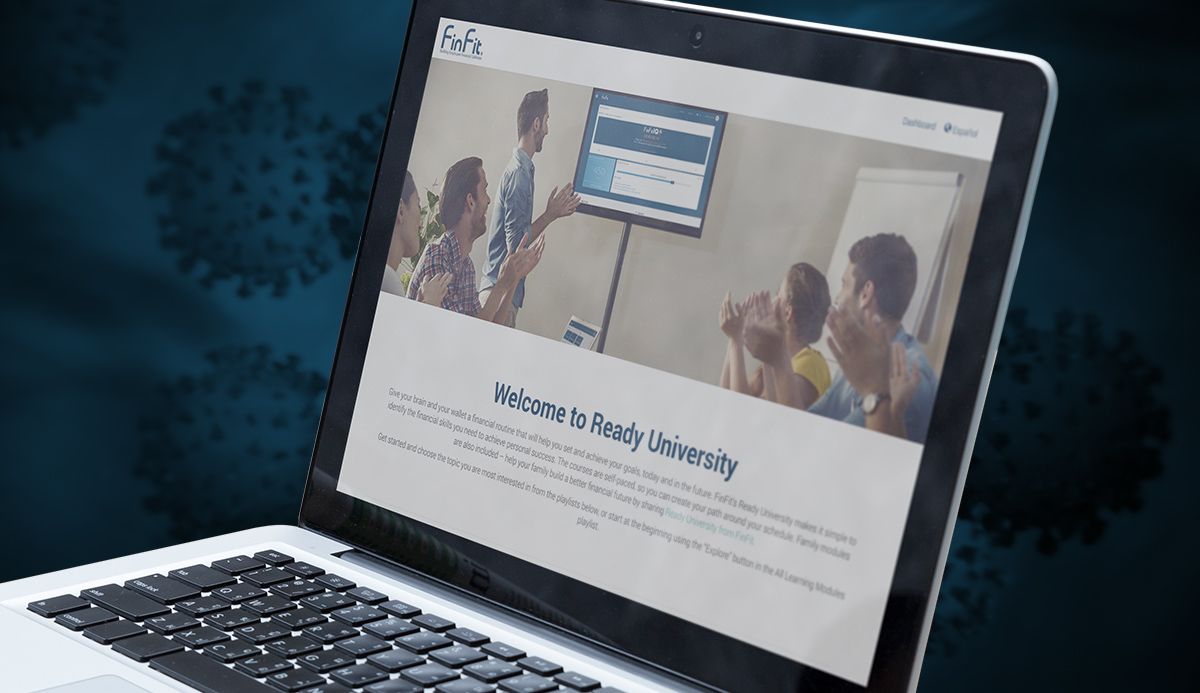Financial Literacy Month in the Wake of COVID-19

The coronavirus pandemic has made it difficult to focus on much else; however, Financial Literacy Month can bring some clarity and focus to various elements of financial well-being that are more critical than ever.
What is Financial Literacy?
Financial Literacy is defined as “ the ability to understand and effectively apply various financial skills, including personal financial management, budgeting, and investing. Financial literacy helps individuals become self-sufficient so that they can achieve financial stability.”
The Effects of The Pandemic
Until recently, we were enjoying a strong economy and record-low unemployment. Challenges for employers were not in being able to afford employee payroll, but rather competing against other employers with attractive salaries and benefits. One of the benefits being used to attract new hires was Financial Wellness.
Blindsided by the pandemic and its impact on the economy, employers and employees alike are now facing financial hardship. Employees recently pondering how to spend their tax refund are now looking at how to stretch that refund to make ends meet in the coming months. The need for financial wellness services has reached critical mass. It is no longer an optional benefit; employees must have access to financial wellness resources.
Even if your employees are fortunate enough to be receiving a paycheck from you yet, it’s quite possible their partner in a two-income household has been laid off or furloughed. Before this crisis, 59% of credit card holders were already in credit card debt and 28% of Americans had no emergency savings – the importance of which is no longer a suggested best practice, but an absolute necessity.
Financial Wellness Resources
Providing employees with resources to develop their financial literacy and improve their financial well-being can help them to weather downturns (like COVID-19) and support sound financial decisions during uptimes. Right now, employees need to understand the importance of maintaining their credit rating and the steps to take to protect it in the event of a layoff or furlough. They need access to credit and banking solutions to help them make ends meet when challenges arise. They need to have an understanding of their investments, including 401(k) and what steps to take (or not to take) when it comes to making adjustments to their portfolio.
Many individuals (and their families) do not possess the level of financial literacy needed to make appropriate financial decisions, which is why an employer-sponsored financial wellness benefit is in such great demand. Right now, a program with budgeting and money-management tools can help employees figure out where they stand with incoming wages, and one-time cash influxes like their tax refund or government stimulus check. They can identify which bills need to be paid, which subscriptions they can pause or cancel and see where they net out.
It will help them to decide if they’ll need to contact creditors for assistance. If they are fortunate to still have a little left over, financial literacy best practices encourage saving for emergencies. Despite current challenges, this behavior of saving should be continued if at all possible right now even if employees must cut back on the amount they were previously saving.
The Nuances of Working From Home
Working from home, isolated from extended family and friends can be a lonely feeling, especially during times of heightened financial stress. Employees shouldn’t have to deal with financial circumstances or questions alone. A financial wellness plan that offers financial coaching can be a great resource to provide one-on-one counseling, helping to increase financial literacy and offer the availability of much-needed resources to assist employees. Having options is empowering, and your employees will appreciate the help you’re able to offer through your financial wellness program.
Take this opportunity during Financial Literacy Month to educate your employees. If you offer a financial wellness benefit, share the resources with your employees and make sure they’re aware of the benefits you offer. Provide them with recommendations on which features are particularly relevant for this challenging moment in their life. And provide them with ways to make use of their benefits to help them recover from today and work toward a more secure financial future.
If you don’t offer a financial wellness program, consider FinFit. We’re offering our platform to employers free until June 30, 2020 to help employers and employees get through the COVID-19 pandemic. Contact us today – we’re here to help.